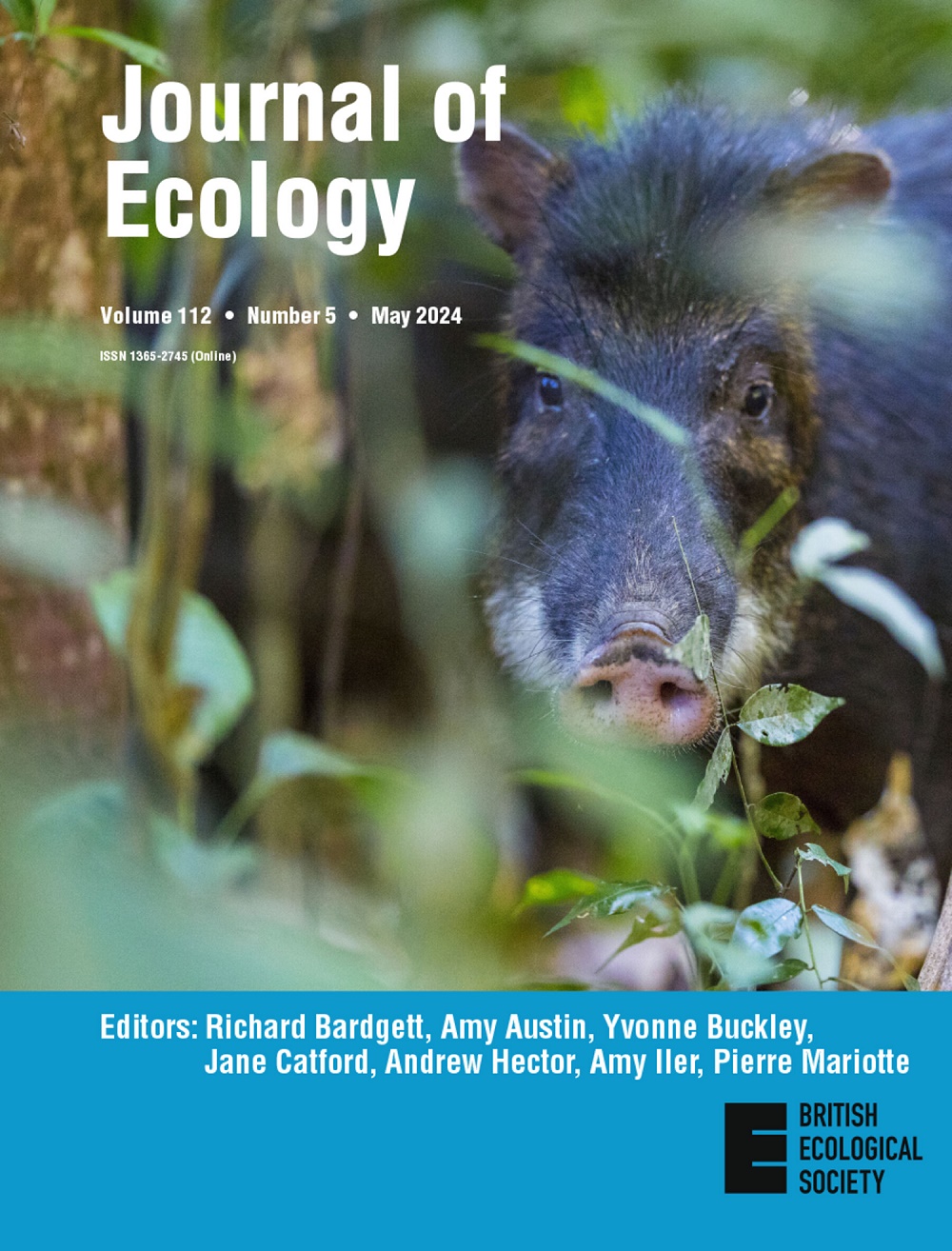Macrophyte species diversity and community stoichiometric homeostasis are correlated with different dimensions of stability following disturbance
IF 5.6
1区 环境科学与生态学
Q1 ECOLOGY
引用次数: 0
Abstract



大型植物物种多样性和群落化学计量稳态与扰动后稳定性的不同维度相关
了解生物多样性和群落功能特征如何在全球环境变化下保持湖泊生态系统的多维稳定性,对于维持我们赖以生存的重要生态系统服务至关重要。通过对洱海大型植物群落的沉积物养分梯度实验和3年季节性监测,探讨了藻华发生前后物种多样性和群落功能特征(化学计量稳态)对藻华发生后大型植物群落稳定性的影响,包括时间稳定性、抗性、恢复力和恢复力等。总体而言,我们发现物种多样性和磷的化学平衡与功能和组成的时间稳定性、抗性和恢复呈正相关,表明物种多样性和群落HP高的生态系统对外部藻华干扰的抗性和稳定性更高。然而,物种多样性和群落HP与恢复力没有正相关甚至负相关,这表明高HP物种主导的高生物多样性生态系统不利于从干扰中快速恢复,这可能是由于高HP物种的生长和繁殖速度缓慢所致。此外,我们发现在稳定性的四个维度上,功能稳定性与组成稳定性之间存在很强的正相关关系,而物种多样性稳定性与关键功能性状(HP)的稳定性之间存在复杂的关系,这意味着同时优化多个维度和稳定性方面的难度较大。合成。我们的研究表明,大型植物物种多样性和群落HP在确定响应干扰的稳定性的多个维度和方面至关重要,这为预测大型植物主导的湖泊生态系统对当前日益频繁的藻华的响应提供了新的见解。
本文章由计算机程序翻译,如有差异,请以英文原文为准。
求助全文
约1分钟内获得全文
求助全文
来源期刊

Journal of Ecology
环境科学-生态学
CiteScore
10.90
自引率
5.50%
发文量
207
审稿时长
3.0 months
期刊介绍:
Journal of Ecology publishes original research papers on all aspects of the ecology of plants (including algae), in both aquatic and terrestrial ecosystems. We do not publish papers concerned solely with cultivated plants and agricultural ecosystems. Studies of plant communities, populations or individual species are accepted, as well as studies of the interactions between plants and animals, fungi or bacteria, providing they focus on the ecology of the plants.
We aim to bring important work using any ecological approach (including molecular techniques) to a wide international audience and therefore only publish papers with strong and ecological messages that advance our understanding of ecological principles.
 求助内容:
求助内容: 应助结果提醒方式:
应助结果提醒方式:


